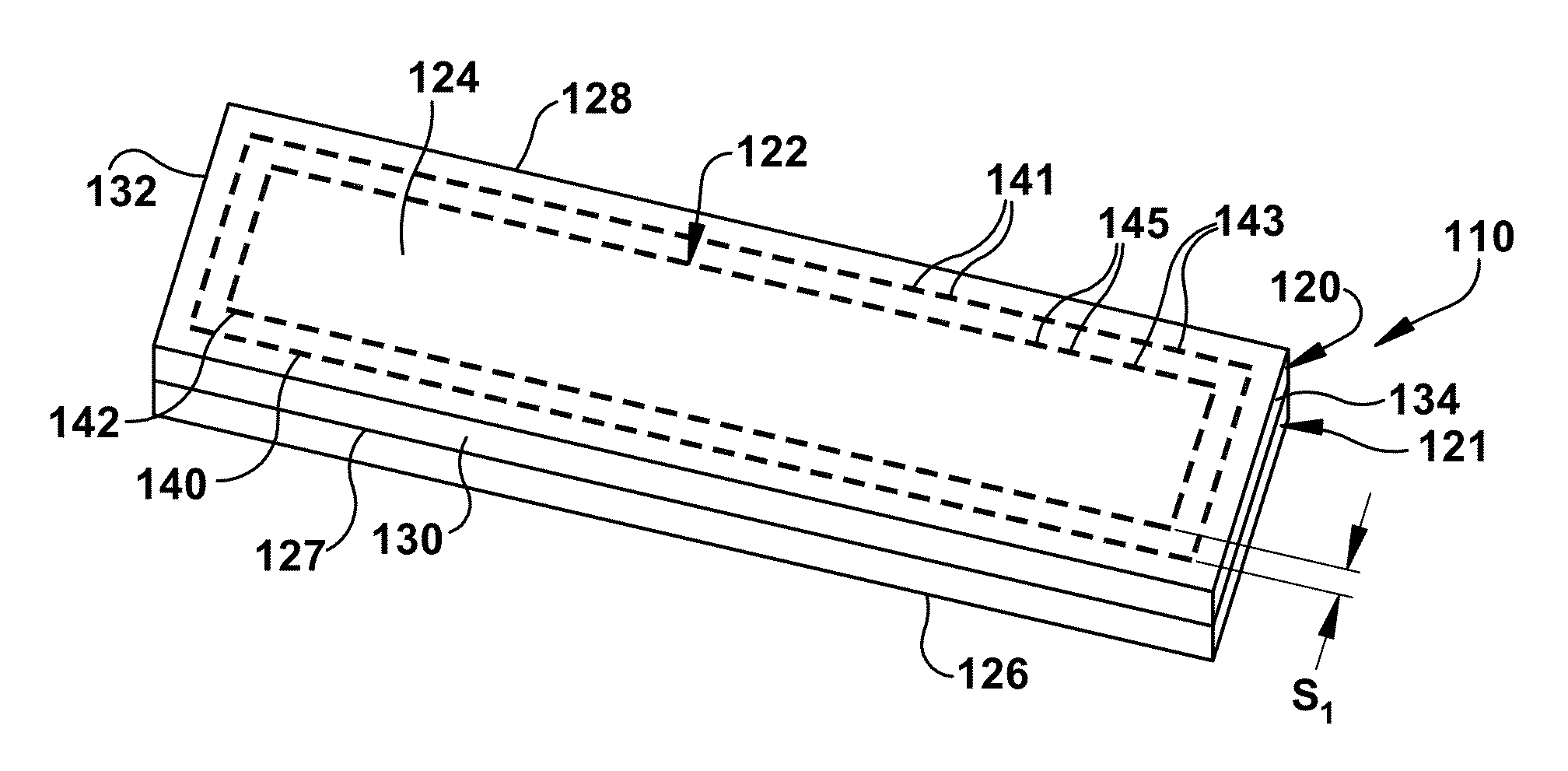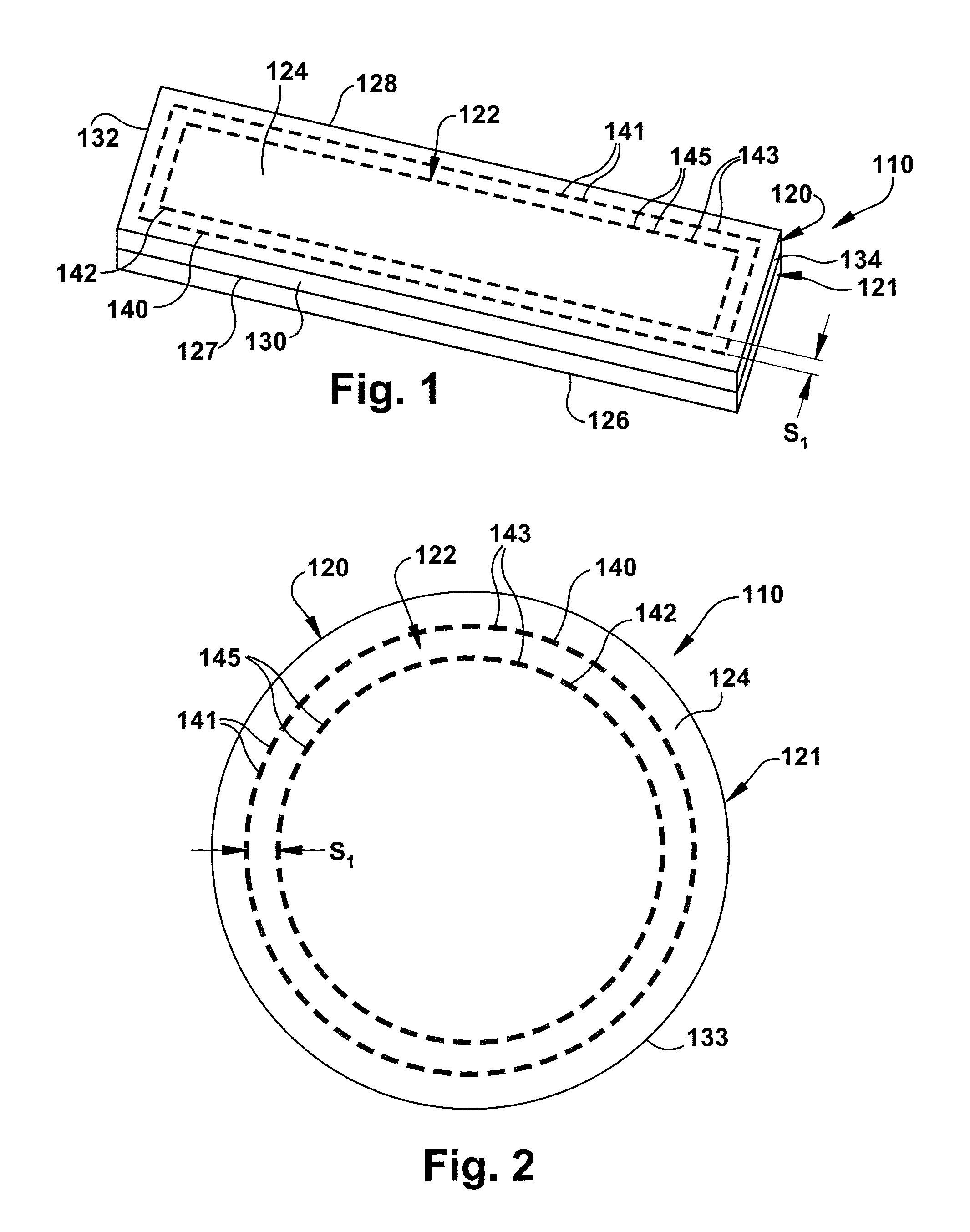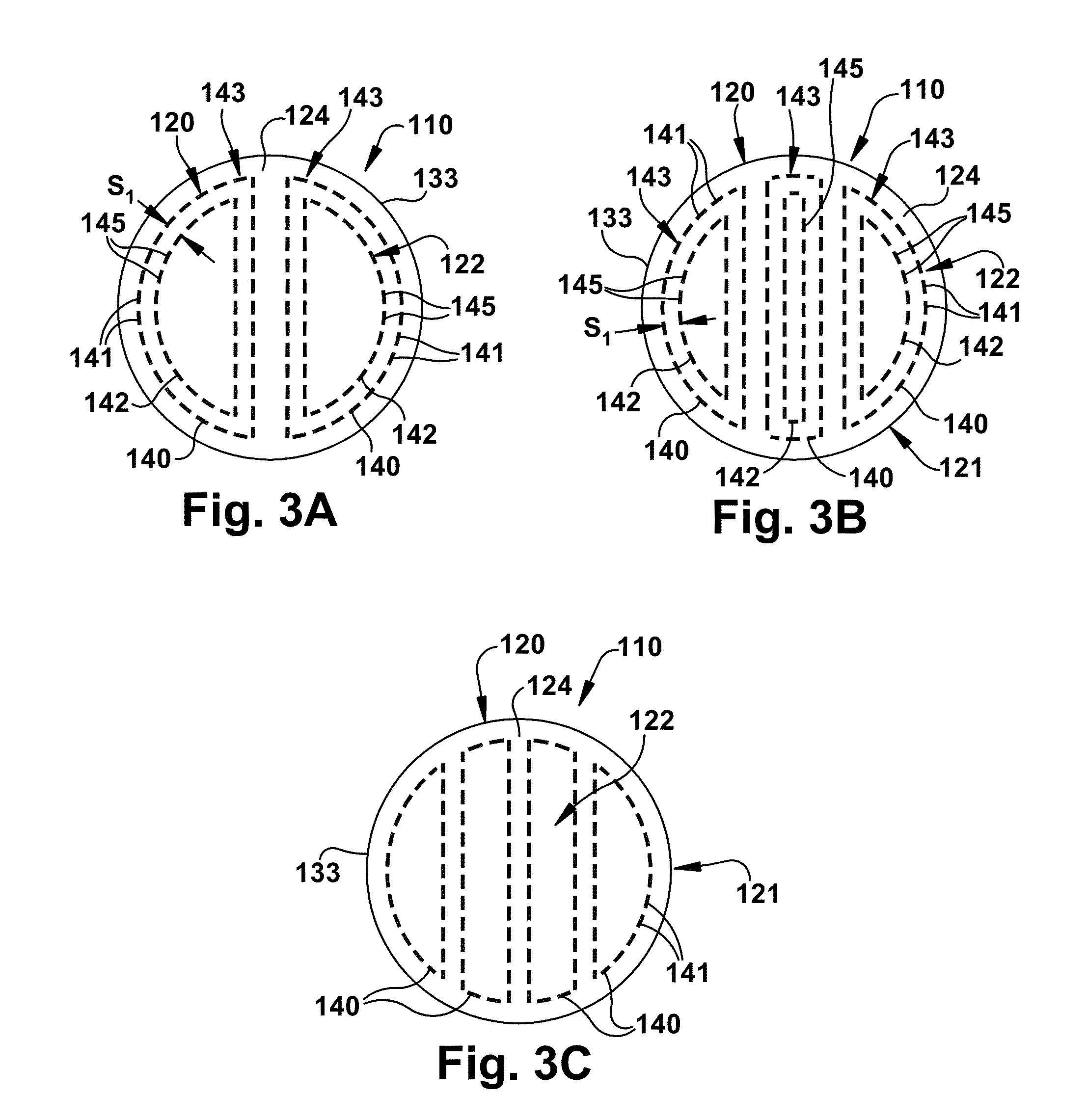Reinforced tissue graft
a tissue graft and reinforced technology, applied in the field of tissue grafts, can solve the problems of incisional hernia incidence rate, synthetic and biological grafts have only shown limited success, and researchers have experienced major challenges in designing methods to repair abdominal wall defects, etc., to achieve the effect of reducing the tearing of the graft, and reducing the cyclic stretching of the gra
- Summary
- Abstract
- Description
- Claims
- Application Information
AI Technical Summary
Benefits of technology
Problems solved by technology
Method used
Image
Examples
example 1
[0103]This example shows stitching dermis and synthetic mesh together using reinforcing fiber improves the mechanical properties of the construct and mitigates tearing and / or improves fixation retention of the layers compared to using either material alone or both materials without stitching them together.
[0104]In this example, four groups were investigated:[0105]1. Dermis (native acellular dermis)[0106]2. Mesh (synthetic UHMWPE mesh)[0107]3. Dermis layered against mesh (but not stitched)[0108]4. Dermis layered against mesh and stitched together using 6PLA / 2PGA polymer braids.
[0109]Uniaxial suture retention tests were used to verify the efficacy of stitching as a method to reinforce the two layers and improve the mechanical properties of the construct by mitigating tearing and / or improving fixation retention of the layers.
[0110]All human dermis grafts included allogeneic or xenogeneic dermis. All 6PLA / 2PGA braids used for reinforcing the layers were obtained from Concordia Fibers, C...
example 2
[0115]In this example, the biodegradable layer is stitched to a synthetic mesh layer with a stitch pattern known to impart a suture retention load to the construct that is greater than the suture retention load of the dermis alone, the mesh alone, or dermis and mesh that are not stitched together (Example 1). The biodegradable layer could be, for example, ECM derived from human allogeneic or xenogeneic dermis, the synthetic mesh could be made from polypropylene and the stitching fiber could be a PLLA / PGA braid obtained from Concordia Fibers, Coventry, R.I. In other embodiments, the synthetic mesh and the stitching fiber could be derived from other synthetic biomaterials with different biodegradation profiles (such as UHMWPE, ePTFE, PLGA and PLLA) or natural biomaterials (such as silk and collagen).
[0116]The stitched biodegradable and synthetic mesh layered constructs are hydrated for 30 minutes in saline solution at 37° C. A single simple suture loop of #2 FiberWire is applied to ea...
example 3
[0130]In this example, the tissue layer is reinforced with fiber in a manner that strengthens and stiffens the tissue layer and is also used for attachment to host tissues.
[0131]The tissue layer could be, for example, a 0.5×6 cm strip of ECM derived from human fascia lata (Musculoskeletal Transplant Foundation, Edison, N.J.) and the fiber could be a UHMWPE braid (ForceFiber, TeleFlex Medical OEM, Kenosha, Wis.) stitched in a single pass across the tissue layer (FIG. 17).
[0132]Two pairs of human cadaveric shoulders (mean age, 55±9 years) were used in this study (Anatomy Gifts Registry, Glen Burnie, Md. and ScienceCare, Aurora, Colo.). In each shoulder, the supraspinatus was sharply released from the proximal humerus and primarily repaired back to its insertion with anchors. For each pair of shoulders, one repair was randomly assigned for augmentation with a reinforced fascia strip (FIG. 18A) and the other repair was augmented with the reinforcing fiber alone (FIG. 18B). The strips or...
PUM
| Property | Measurement | Unit |
|---|---|---|
| Angle | aaaaa | aaaaa |
| Adhesion strength | aaaaa | aaaaa |
| Biocompatibility | aaaaa | aaaaa |
Abstract
Description
Claims
Application Information
 Login to View More
Login to View More - R&D
- Intellectual Property
- Life Sciences
- Materials
- Tech Scout
- Unparalleled Data Quality
- Higher Quality Content
- 60% Fewer Hallucinations
Browse by: Latest US Patents, China's latest patents, Technical Efficacy Thesaurus, Application Domain, Technology Topic, Popular Technical Reports.
© 2025 PatSnap. All rights reserved.Legal|Privacy policy|Modern Slavery Act Transparency Statement|Sitemap|About US| Contact US: help@patsnap.com



